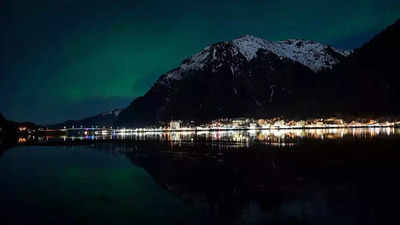- News
- Science News
- NASA is launching rockets into auroras to uncover their mysterious movements — here’s why
NASA is launching rockets into auroras to uncover their mysterious movements — here’s why
NASA plans to study the Northern Lights by launching rockets in Alaska. The goal is to understand the causes of auroras' flickering, pulsating, and dark spots. Two missions with advanced instruments will investigate these phenomena. Weather conditions in Alaska will play a crucial role in the success of the missions. Ground-based cameras will help track the rockets.
NASA is gearing up to launch rockets into the Northern Lights to study their mysterious movements. The research, conducted in Fairbanks, Alaska, is to determine the causes of pulsating, flickering, and dark spots found in auroras. These spectacular light displays are created by charged particles from solar flares interacting with Earth's magnetic field.
Rockets are set to launch from Alaska this week, providing a closer glimpse at these captivating phenomena. By launching them with sophisticated instruments, researchers at NASA want to gain an understanding of how these tiny particles affect an aurora.
NASA studies auroras' unique patterns with rocket missions from Alaska
To delve deeper into the phenomena, NASA scientists will be using rockets to study the mysterious phenomena in close-up detail. The reasons why some auroras seem to throb, flicker rapidly, or even develop holes in their patterns remain an enigma. This has been accomplished by performing two separate missions from the Poker Flat Research Range in Fairbanks.
What are auroras and how are they formed?
Auroras are phenomenal natural light events that take place in the polar regions. They are formed when charged particles, mainly from solar flares, collide with Earth's magnetosphere. These collisions produce ribbons of light that stretch across the night sky in various colors. Each aurora is unique, almost like a fingerprint, with distinct patterns and movements that scientists are still trying to fully understand. While the role of solar particles and Earth's magnetic field are well established, for instance, reasons for variations in aurorae dances, such as flicker, pulsate, and even dark "holes," are not known.
NASA’s rocket launches depend on Alaskan wind conditions for optimal aurora study
The fate of these missions greatly depends on the specific weather in Alaska. NASA has stated that wind conditions, which are expected to affect rocket launch timing and trajectory, are a priority. The auroras will be followed as they go across the horizon with cameras located on the ground and transferred in real-time, and then further analyzed for useful data. Ground-based cameras in Venetie, Alaska, which is approximately 130 miles northeast of the rocket launch site, will also help in tracking the trajectory of the rockets.
From Galileo’s naming to NASA’s rockets: Advancing the understanding of auroras
Although the science of auroras is a relatively recent phenomenon, the phenomenon itself has been around since ancient times. In the 4th century, Aristotle was one of the first scientists to describe the phenomenon of auroras. The term "Aurora Borealis" was coined by astronomer Galileo. Today, those NASA missions would be a centennial extension to continue building, exploring the science behind the northern lights and more generally to get at Earth's magnetic field and the relationship of the Sun with our home planet.
Hoping to reach such a pivotal point, which would bring these findings into sharper relief and enhance the understanding of this aurora process, perhaps also in terms of a pathway leading toward the possibility of forecasting space weather in the years to come.
Also Read | Does Earth really have 7 continents? New study reveals a hidden supercontinent beneath the surface
End of Article
FOLLOW US ON SOCIAL MEDIA
Hot Picks
TOP TRENDING
Explore Every Corner
Across The Globe


